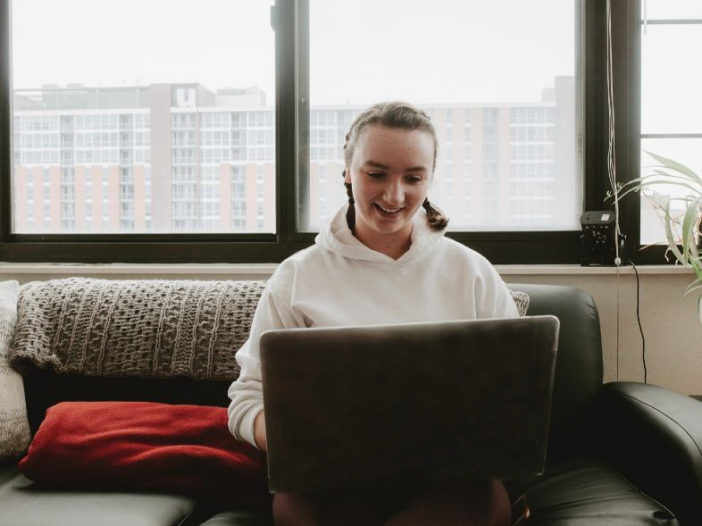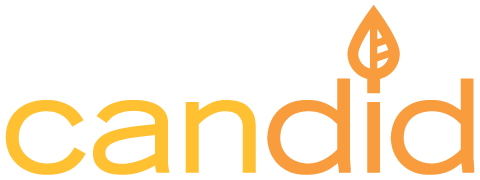
Connecting is Key
By: Ginger Morgan
I started writing this blog a couple of weeks ago. Seems like almost another lifetime. In the time before. Before. Before COVID-19 took over the 24-hour news cycle and before we knew anything about social distancing. One of the things you will notice about Candid is that while we are interested in supporting YOU — an individual UW student who at this moment may or may not be in Madison, WI — on your own wellness journey, we also understand that individuals thrive most when connected to people and things beyond themselves. That’s why ultimately your well-being is connected to, well, being connected. Hence, our idea of promoting wellness that is self-directed, but not alone.
It’s really confusing to try to figure out what that means today. According to the guidance offered (3/17/20) by Dane County (the county where Madison is located) we should all try to “shelter in place,” reducing our movement around town and limiting contact with others outside of our home environment as much as possible. And since the Chancellor has confirmed that in person courses are suspended for the rest of spring semester, it isn’t clear when we may be able to see one another again. A friend of mine recommended we begin saying we are practicing physical distancing and social solidarity during this time. So, that brings us to the million-dollar question:
How Do We Stay Connected When We are Physically Apart?
FaceTime:
I asked my daughter a couple of days ago, as we were all adjusting to our “new normal”, if she and her friends were going to be connecting via Google Hangouts or FaceTime. She gave me that look. The “you are so out of touch, Mom” look. “Google Hangouts?” she asked incredulously. “OK,” I amended, “FaceTime”. Lo and behold, by that evening she and her friends were chatting away via FaceTime on their phones, connecting. I have to say I am grateful for the ways technology can connect us as we navigate our current challenges.
Zoom:
I think I have been on more Zoom Meetings in the past 48 hours than in my whole professional life leading up to this week! What we don’t know already about using Zoom, we are learning very quickly. For example, if you have an email account and internet, you can get a free account that lets you connect with video and audio for up to 40 minutes per meeting. (More time or lots of people costs money.) My spouse spoke to someone yesterday who was doing their Zumba class via Zoom… I have used Skype in much the same way, making dates with friends far away to talk over tea or coffee (we each provide our own). Tonight we will experiment with virtual voice lessons via Zoom.
Group Listserv Stories:
A person in a community group I belong to just started an email thread on that group’s listserv sharing stories of relationships and connections through the group and how that makes her grateful during a stressful time. I love that. People immediately started sharing their stories and why they were grateful. It sometimes takes that first person to invite connection and sharing in a different way than we sometimes think of to get the ball rolling. I love the idea that we can take time to share stories of connection and gratitude with each other on Facebook, sharing photos on Instagram, reaching out to friends we may not have contacted for a while through email, or talking or using FaceTime on the phone.
Set Up Friend/Cohort Challenges:
We also need to acknowledge that technology doesn’t work equally well for everyone. My son’s friends, who connect through a lot of physical activity (bike rides, horse play, throwing balls and frisbees), do less well on the phone. When I asked if he was talking to his friends, he said, “Not really. It’s too chaotic.” I think his response is — in part — that phone talking for their group isn’t a good medium for some of his friends who are quite verbally boisterous.
I think it is also totally true that not everyone connects through talking, so using a phone or FaceTime for him isn’t very appealing. What he IS excited about is making sure he “meets” the daily workout challenge he and his friends have set up (squats, push-ups, planks, pull-ups, etc.) while school is suspended. He realized at 9:30 pm last night he hadn’t done his Bring Sally Up, Bring Sally Down Squat Challenge – so immediately got on it!
Special Resources:
Some of the young adults I know are in recovery from substance use disorders and usually attend AA or NA meetings around Madison. For them figuring out how to get support and connect about their recovery is critical to their well-being while also trying to limit their in-person contact. The phone app InTheRooms has provided real time chat and video meetings they can access to touch base and give and receive support for their ongoing recovery.
These online resources work because of shared concern or framework (12-step recovery from substance use disorder) that allow people who don’t know one another to connect online. There are similar online connections for folks who manage eating disorders, anxiety, and depression.
The Hard Stuff:
For some, dealing with this level of physical distance or isolation can produce anxiety or exacerbate depression, as well as trigger other mental health challenges or conditions. If humans thrive when connected, then the present situation brings very real challenges and disconnections from what are our usual resources and routines.
We are not certain how long this will last. There is a lot that feels out of our control. So, it is especially important to find friends or others with whom you can feel safe talking about the hard stuff… whatever that is for you.
Some therapists can offer phone, online or video counseling/therapy. UHS offers all UW students access to mental health support through SilverCloud or calling their 24/7 emergency number: 608-265-5600 (option 9). UHS can also help connect students to support through referrals and problem solving by calling 608-265-5600 (option 2).
If you or someone you know hits a wall and feels desperate or suicidal, national resources include The Crisis Text Line by texting TALK to 741741 or National Suicide Prevention Lifeline at 1-800-273-TALK.
How Are You Connecting?
I’d love to hear from you about how you are connecting during this time of physical distancing and the suspension of UW in person classes. What’s working? What struggles are you having? What challenges might you invite your friends or family to do with you during this time? Post on the Candid UW Facebook thread and let us know!
We Are Here
Most of all, I want you to know that we are here. The Candid staff and folks at Pres House are available to talk via Zoom or Skype or phone or FaceTime if you need extra support or some connection with your UW community. Email candid@preshouse.org to set up a time to talk. When we say, “self directed, but not alone” — we really mean it.
Written by Ginger Morgan, PhD
Director of Candid–Health and Life Coach
